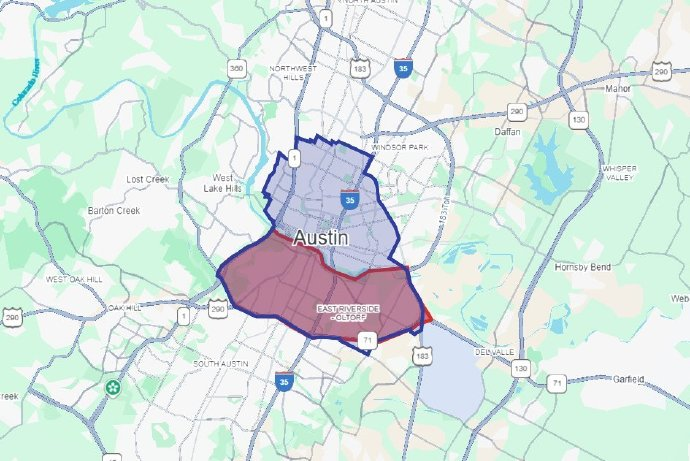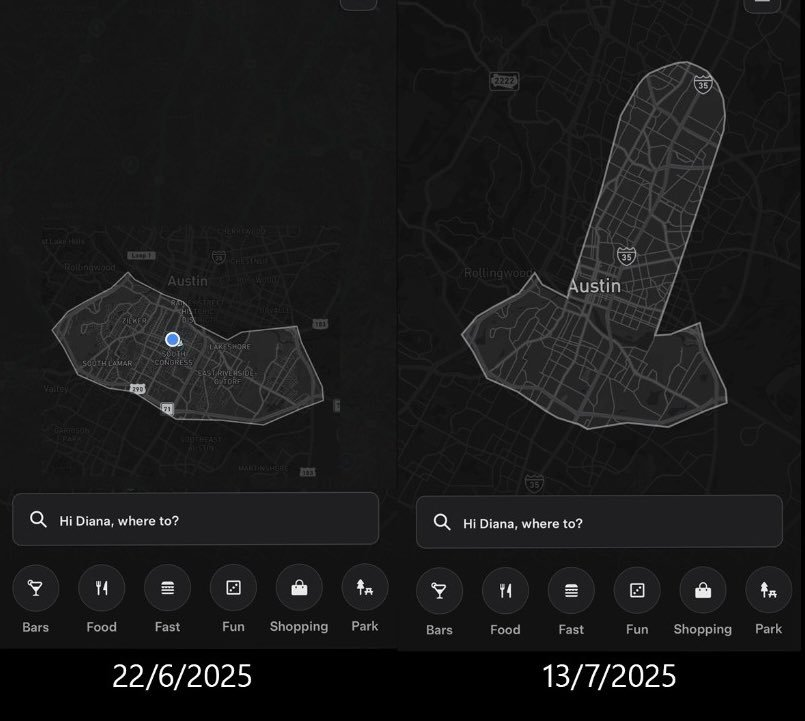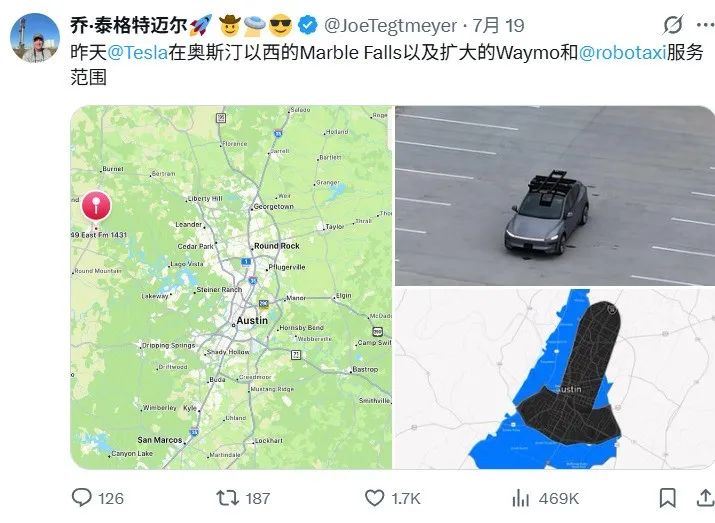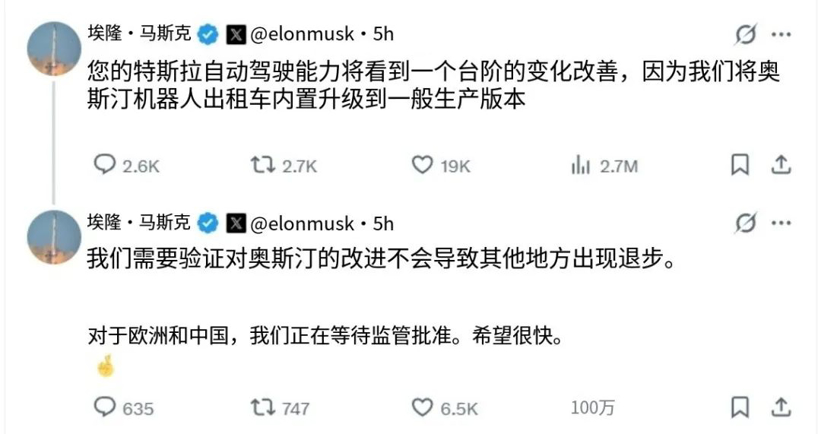Tesla and Waymo are in a competitive showdown as Tesla's Robotaxi service begins operations in Austin. Initially, Tesla's operational area was half the size of Waymo's established territory. Elon Musk announced plans to expand the Robotaxi's operational area to the California Bay Area within 1-2 months. Less than a week later, the Tesla Robotaxi app was updated to extend its operational area to 42 square miles, surpassing Waymo's territory. Musk jokingly remarked on social media about the larger area, stating 'bigger, longer, and uncut'. In response, Waymo launched its first major area expansion since starting services in Austin, increasing its operational area to 90 square miles and emphasizing that its service is fully autonomous, available 24/7, and open to the public. This highlights the current challenges for Tesla, which requires a safety driver in the passenger seat and operates only from 6:00 AM to midnight, with rides currently limited to invited guests. Despite the competitive tension, Tesla seems poised to respond. A drone operator recently spotted a Tesla Robotaxi verification vehicle in the Marble Falls area, over 100 kilometers from downtown Austin. If included in the operational range, Tesla's area would significantly exceed Waymo's. This ongoing competition raises expectations about the real-world capabilities of Tesla's Robotaxi. Furthermore, Musk announced plans to integrate the Austin Robotaxi software into production vehicles, aiming to enhance the overall performance of the Full Self-Driving (FSD) system with real-world data. However, upgrades in Europe and China are pending regulatory approval. The integration could potentially lead to significant improvements in FSD, leveraging real-world data generated by Tesla Robotaxi operations. Musk also hinted at an upcoming model with 4.5 times the parameters, suggesting a substantial upgrade for Tesla's FSD is on the horizon.
Tesla and Waymo Clash Over Robotaxi Expansion in Austin

Images





Share this post on: